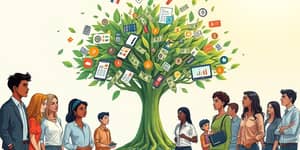In 2025, the global economy is grappling with unprecedented debt levels, while millions seek pathways to rebuild personal wealth. This journey from burden to financial freedom demands both macroeconomic understanding and individual action.
Why Debt is Different in 2025
The aftermath of the pandemic accelerated borrowing worldwide, leaving nations and individuals with staggering obligations. Global public debt topped record $307 trillion global public debt by late 2024, driven largely by advanced economies responding to crisis.
Countries everywhere face soaring debt servicing costs. In the United States, interest payments now eclipse defense spending, reshaping fiscal priorities. Corporate borrowers confront a maturity wall, with over $1.1 trillion coming due between 2024 and 2028. High interest rates only amplify these pressures, limiting public investment in infrastructure, education, and social services.
Rebuilding Begins: The Wealth Transfer and Personal Strategies
Amidst this burden, a profound massive intergenerational wealth transfer underway offers hope. Americans under 43 expect to inherit substantial assets, with over half planning to eliminate debt and 60% intending to invest for growth.
- Paying off high-interest obligations first establishes stability and reduces long-term costs.
- Building an emergency fund shields against future financial shocks.
- Allocating inherited or saved capital into diversified portfolios balances risk.
- Exploring private equity, private debt, and sustainable investments aligns wealth with values.
By paying off high-interest debt early, individuals can redirect resources toward opportunity. An emergency cushion averts reliance on credit cards or payday loans, breaking the cycle of high costs and stress.
Tools and Trends in Wealth Building
Innovation is transforming how we save, invest, and grow capital. Digital platforms democratize access, while artificial intelligence refines decision-making. Experts project a 1.5% annual productivity boost from generative AI, translating into an estimated 2.6–$4.4 trillion annual benefit for global economies.
- Cutting-edge robo-advisors automate portfolio rebalancing and tax optimization.
- cutting-edge digital investment platforms enable fractional ownership of real estate and blue-chip stocks.
- Blockchain-based solutions offer transparency and reduced fees in cross-border transactions.
These technological shifts lower barriers to entry, empowering individuals with limited capital to participate in markets once reserved for institutions.
Overcoming Barriers: Policy, Reform, and Inclusion
Systemic reforms are essential to address unequal access and fragile finance. Developing nations often face prohibitive borrowing costs, while local communities may lack affordable credit. Experts advocate for revamped debt restructuring mechanisms and expanded liquidity during crises.
Personal and institutional stakeholders can push for inclusive policies that widen credit access and prioritize financial education.
Generational Shifts and Social Change
The coming decades will witness dramatic shifts as younger cohorts inherit and deploy capital differently. With 73% of investors aged 21–42 embracing sustainable assets compared to just 26% of older peers, environmental and social governance (ESG) considerations move to the forefront.
These priorities reshape corporate behavior and market offerings, fueling a broader movement toward responsible growth. Financial advisors and institutions must adapt, offering bespoke solutions that reflect evolving values and generational demands.
Future Outlook: Navigating Risks & Opportunities
Looking ahead, geopolitical tensions and economic volatility remain significant risks. However, resilience is built through flexibility, continuous learning, and proactive planning.
- Regularly review and rebalance your portfolio to align with shifting markets.
- Invest in ongoing financial literacy and skill development.
- Leverage policy changes—such as rate cuts or stimulus programs—to refinance or expand investments.
- Stay informed on technological advancements to capitalize on emerging sectors.
By combining individual initiative with systemic reform and innovation, the journey from debt to dollars becomes attainable. In 2025 and beyond, a balanced approach—melding discipline, opportunity, and inclusion—will pave the way to sustained prosperity.
References
- https://www.pwc.com/jg/en/publications/asset-and-wealth-management-revolution.html
- https://sites.lsa.umich.edu/mje/2025/04/03/the-great-wealth-transfer-and-its-implications-for-the-american-economy/
- https://www.weforum.org/stories/2025/01/5-transformational-trends-shaping-global-finance/
- https://unctad.org/publication/world-of-debt
- https://www.im.natixis.com/en-us/insights/investor-sentiment/2025/wealth-industry-survey
- https://executiveeducation.wharton.upenn.edu/thought-leadership/wharton-at-work/2025/01/navigating-2025/










